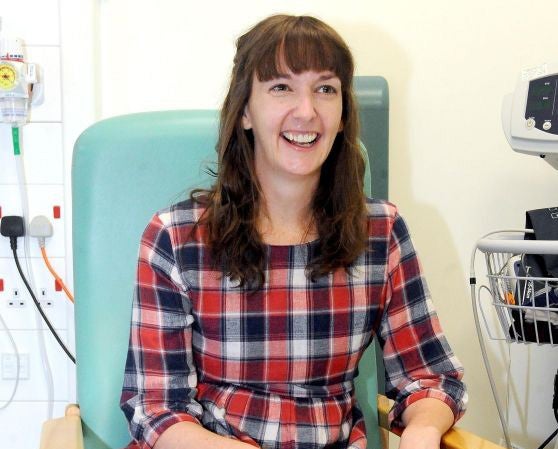Pauline Cafferkey: As Ebola nurse returns to hospital, scientists' fears about virus living on in tissue are confirmed
Experts have admitted to being stunned by the way that the virus can live on

Ebola can stay buried in survivors’ tissue meaning that its effects could continue long after people have apparently recovered, experts have said. And while there is no reason to worry about a return of the virus in the UK, its persistence could be a way that it will flare back up again.
Pauline Cafferkey, who became known as the “Ebola nurse” after she received treatment for the deadly virus earlier this year, has gone back into hospital for treatment for the third time. And it appears that having lasting effects long after apparent recovery, even though it doesn’t mean that people can catch it twice.
The re-emergence of problems appears to be because the disease is hanging around in hard-to-reach areas of the body, according to experts. That means the risk of transmission is low, but there is a “risk that further outbreaks can be triggered”, according to experts.
Ms Cafferkey worked in Sierra Leone until the end of 2014. When she came back to the UK, she was diagnosed with the virus and went to treatment in isolation at the Royal Free Hospital, which is a specialist in Ebola and other infectious diseases.
Towards the end of January, the hospital said that she was free from infection and was released.
But she has now returned to the same hospital twice, as she battles complications arising from her original infection.
Ebola patients are put into isolation in intensive care. They have their blood oxygen levels and blood pressure monitored, and their organs are supported, until they can return to their previous state.
It isn’t clear what treatment Ms Cafferkey is undergoing now that she has returned to hospital for the second time. But it is related to her previous exposure to the virus, according to experts.
Scientists are still not entirely sure about what the long-term effects of Ebola are.
"It seems that some of the ongoing health problems with people's eyes, joints and hair loss are actually caused not by the after-effects of Ebola, but by the small amounts of Ebola which is still residing somewhere in the body," Dr Ben Neuman, a virologist at the University of Reading, told BBC Radio Scotland.
"It's surprising and we're just learning how to deal with this."
Health experts said that the way the disease lives on in tissue could be a potential way of it coming back, however.
"We know that Ebola virus can shelter in the body in what are called immune privileged sites such as the eye, central nervous system and testes,” said Julian Hiscox, professor of infection and global health at the University of Liverpool.
“"Due to the sheer scale of this outbreak compared to previous ones, we are going to see aspects of Ebola virus infection that we have not observed before.
"I think the persistence of the virus in asymptomatic individuals is a potential reservoir of the virus. We know that infectious virus is present in semen for a number of months. It's why men who have had Ebola and recovered are advised to abstain or wear condoms."
But the return of the effects of the disease in McAfferkey doesn’t necessarily mean that the virus is flaring back up.
"The good news is that it's probably not going to be infectious,” said Dr Neuman. “The virus, once it is removed from the blood once, tends to retreat into the hard-to-access compartments of the body.”
The NHS in Greater Glasgow and Clyde’s director of public health, Dr Emilia Crighton, assured the public that there was a “very low” risk to the public of the problems returning.
“Pauline’s condition is a complication of a previous infection with the Ebola virus,” Dr Crighton said. “The risk to the public is very low. In line with normal procedures in cases such as this, we have identified a small number of close contacts of Pauline’s that we will be following up as a precaution.”
A version of this article was originally published on 9 October 2015
Join our commenting forum
Join thought-provoking conversations, follow other Independent readers and see their replies
Comments